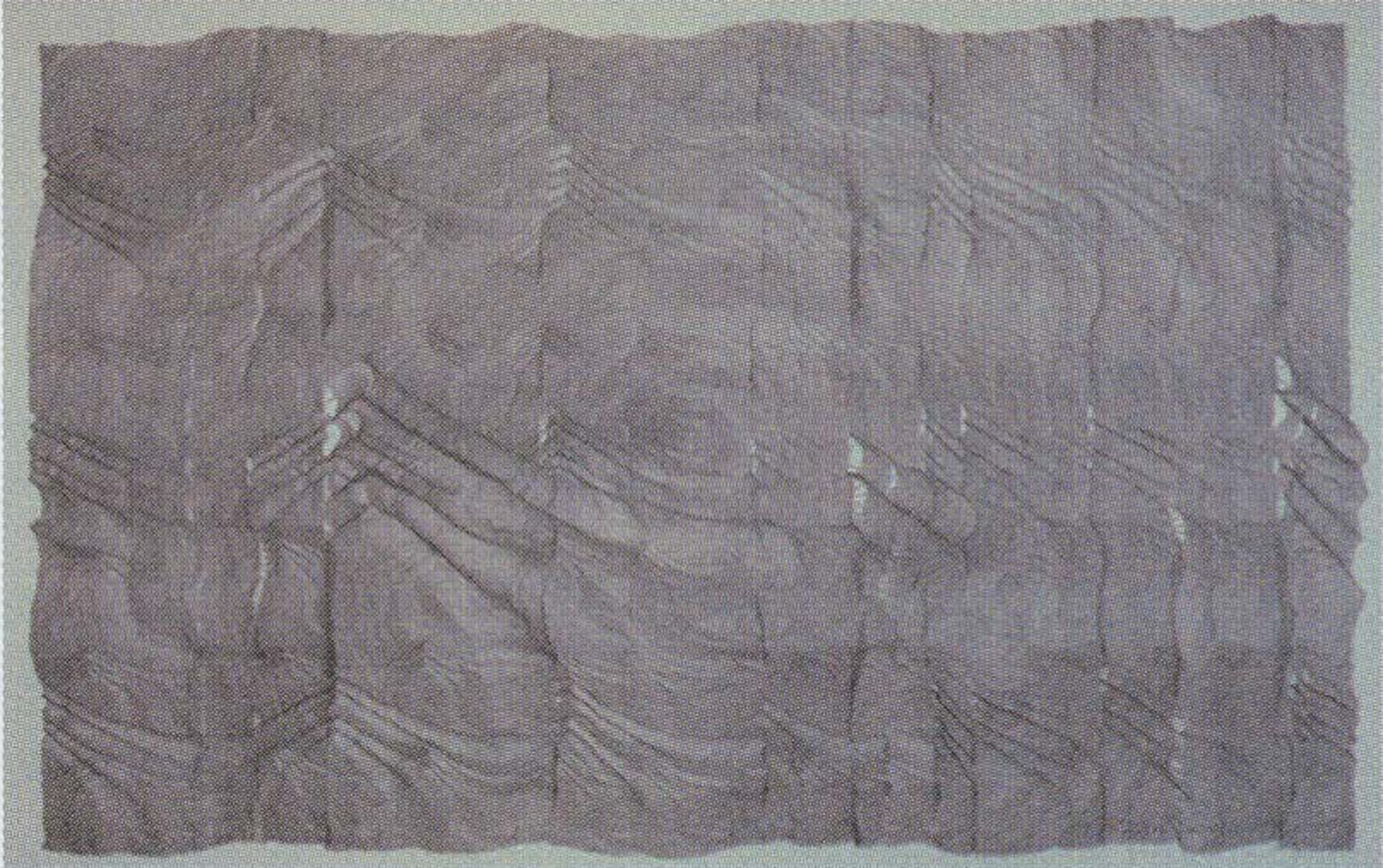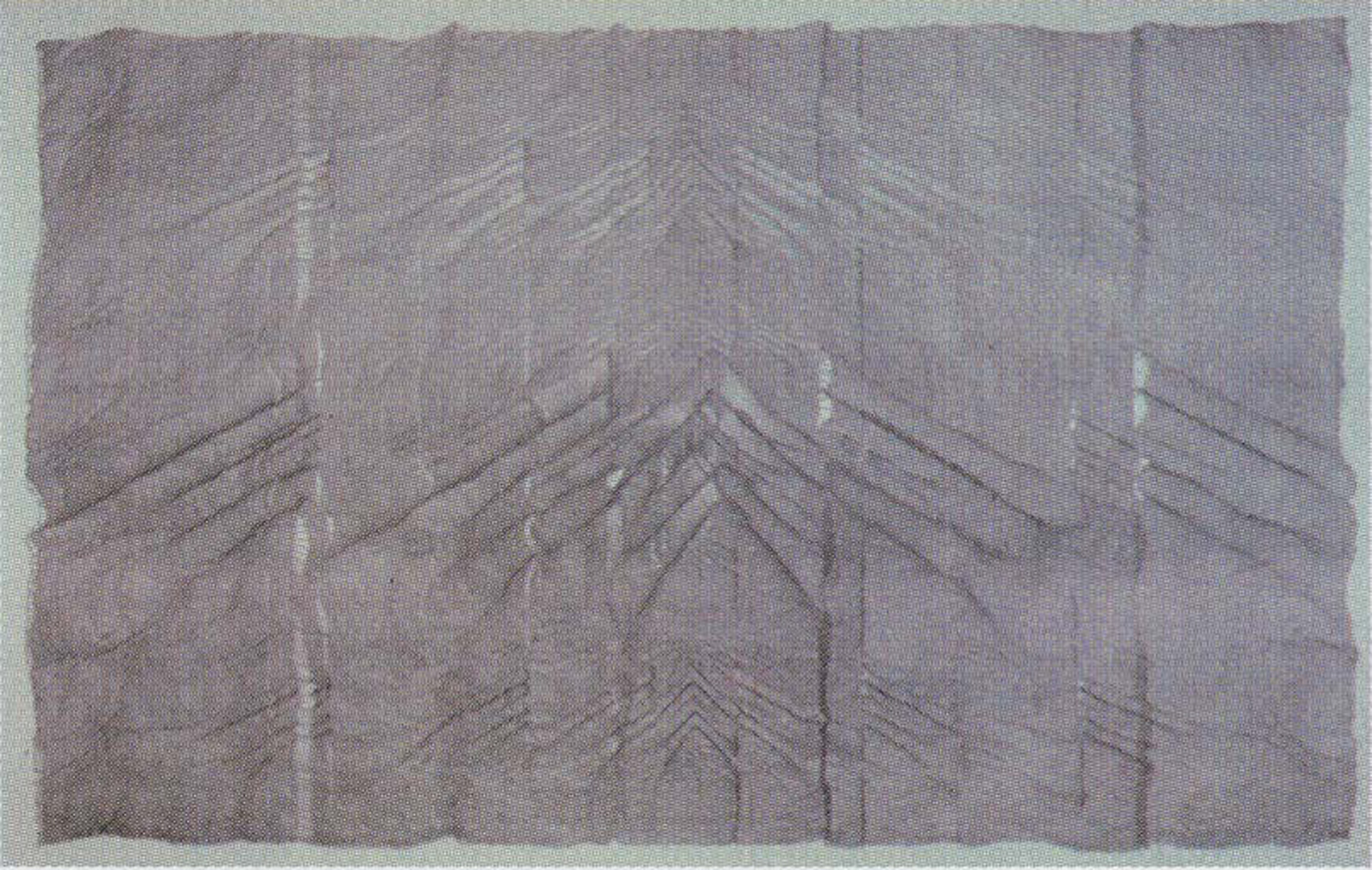Jean-Pierre Hébert: Shandong Mountains
Artist(s):
Title:
- Shandong Mountains
Exhibition:
Creation Year:
- 2001
Medium:
- Ink and graphite lead on paper
Size:
- 4 inches x 23 inches x 31 inches
Category:
Keywords:
Artist Statement:
I have always admired calligraphy, sketches, drawings, and etchings, for these works show so clearly the artist’s hand and the eye and mind guiding it. I have always liked to draw. But for 20 years, I have also endeavored to use mathematics, personal software, and computer driven devices to conceive and produce drawings of a compelling quality, matching the masterpieces of past tradition.
This work is an exploration of the world of lines; supple watercolor lines building surfaces like threads make fabrics in abstract landscapes, concrete geometries, or minimal scenes. Flexible, innumerable lines, their crafted rhythms organize shapes and shades.
Their accurate arrangement is planned by precise calculations. These calculations are organized by a master plan composed as a framework uniquely describing the piece. A piece results from its conception, from a plan, and made visible by drawing lines. Preliminary sketches and studies are usually necessary before a good size piece can be completed.
The hand is too impatient to render the accuracy and intricacies of the final design. As a weaver needs a loom to manage one’s thread, mechanical help is required to guide pens faithfully and save the elegance and details of the work. Thus empowered, the mind can request and perform what hand alone cannot do.
Each piece is unique and rendered with light fast inks or leads on quality, acid-free paper. According to size and complexity, a few hours to a few days are needed to set-in inks the few yards (or the few miles) of lines to create the piece.
Help comes from a mechanical device: the plotter. A computer is needed to drive this plotter. It can also help in the computations mentioned before – as a piece is defined by thousands (or millions) of points – and in composing the computations plan. Only custom software that I write myself is used here. This allows for an intimate dialogue with the computer and insures the complete originality of this work.
Although a computer is involved in the creative process, this work is nothing but a tribute to and a continuation of thousands of years of drawing, geometry, and fine art from all civilizations past. In fact, the computer as a tool fades entirely behind the aesthetic and spiritual concerns that art builds upon.
More recently, I have ventured into new media: from Gide prints to etchings, from works on wood and steel, to glass and sand. In this diversified approach, the above process remains exactly the same. In fact, the power of the process is a clear invitation to explore new media as new production techniques extend the process reaches, and new means render my conceptual lines in new ways. So I continue creating images by writing software, abstract description of visions that I then translate to the world of objects.
Four Scenes of Mount Tai’ In empathy with Carl Jung’s concept of unus mundus, and feeling that numbers are in the same continuum as our minds and souls, I was tempted to try a series following the classical Chinese scholars’ fantasies, in my own algorithmic way. I chose the most venerated of the five sacred Chinese mountains – Mount Tai in the Shandong province – as the location of four scenes.
The Primary Lady of Blue Mist was the goddess sharing Mount Tai with the Mountain god, who controlled the life and death of all individuals. Shandong Mountains, a diptych, draws a symbolic map of the whole area. Ascending the South Heavenly Gate was a 6,000 stone steps grueling effort, a preliminary to offering the Feng ritual to heaven.
Other Information:
References Munakata, K. (1991). Sacred Mountains in Early Chinese Art. Champaign-Urbana: University of Illinois Press.
Von Frantz, M-L. (1974). Number as the basic manifestation of the mind. In Number and time: Reflections leading toward a unification of depth psychology and physic.s. Evanston: Northwestern University Press.






